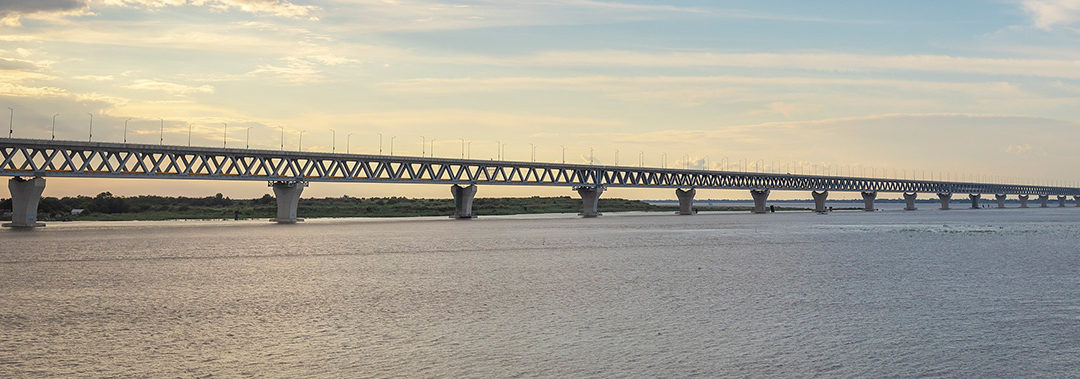The 6-kilometer-long, steel-constructed Padma Bridge is a game-changer for Bangladesh, as it connects 21 southwestern districts to the country’s capital and boosts the economy.
Padma River is a major Ganges tributary that originates in the Gangotri glacier in the Himalayas, flows through India and Bangladesh, and empties into the Bay of Bengal.
The Padma, one of the most traveled waterways in the world, has a broad riverbed that divides into numerous channels dotted with shifting islands and sandbanks. While navigable throughout the year, the rainy season makes river navigation increasingly difficult.
During heavy downpours, this could isolate the entire southwest of Bangladesh from the nearby capital and the rest of the country for all but the most courageous and skilled travelers.
With this in mind, the Bangladeshi government embarked on a massive infrastructure initiative to ensure a safe, year-round crossing of the Padma and to improve access to and from the southwest by connecting road and rail networks.
Making connections with steel
The Padma Bridge, constructed at a cost of $3.6 billion, is 22 meters wide and 6.15 kilometers long, making it the longest spanning the Ganges. It is a two-level steel truss bridge that carries a four-lane highway on its upper level and a single-track railroad on its lower level.
In addition to providing rail and road connections, the bridge also carries vital utilities, including telecommunications lines and stainless steel high-pressure gas pipes. There are plans to equip the bridge with seven 400kv steel-latticed interconnector towers so that it can transmit electricity.
Padma Bridge is a triumph of steel-built engineering that is expected to add between 1-2% to the country’s GDP
The bridge’s structure consists of 41 150-meter-long connecting spans. These are supported by 42 piers with 262 high-strength steel piles as foundations. These steel tubes with a 3m diameter are driven up to 100m into the earth to support the massive length of the bridge as well as the weight of road and rail traffic.
This steel core enables the piers and their foundations to withstand all conceivable stresses, ranging from liquefaction of the riverbed to impacts from river vessels to earthquakes – a crucial factor in seismically active Bangladesh, which sits at the intersection of multiple active tectonic plate boundaries.
The awe-inspiring Padma Bridge, which represents a sea change for Bangladesh’s infrastructure, is a triumph of steel-built engineering that is expected to add between 1% and 2% to the country’s GDP and establishes a benchmark for investment.
Read More :
What is Food-grade stainless steel and its benefits?: Steel is commonly used in Indian houses for cooking and eating since it is inexpensive, durable, and resistant to rust. Do we truly know whether the stainless steel we use is safe for our bodies, despite its widespread use in the home?
Selecting Metals and Alloys for Medical Device Manufacturing: The work quality of metal component manufacturers who supply the medical device industry has recently improved significantly.

